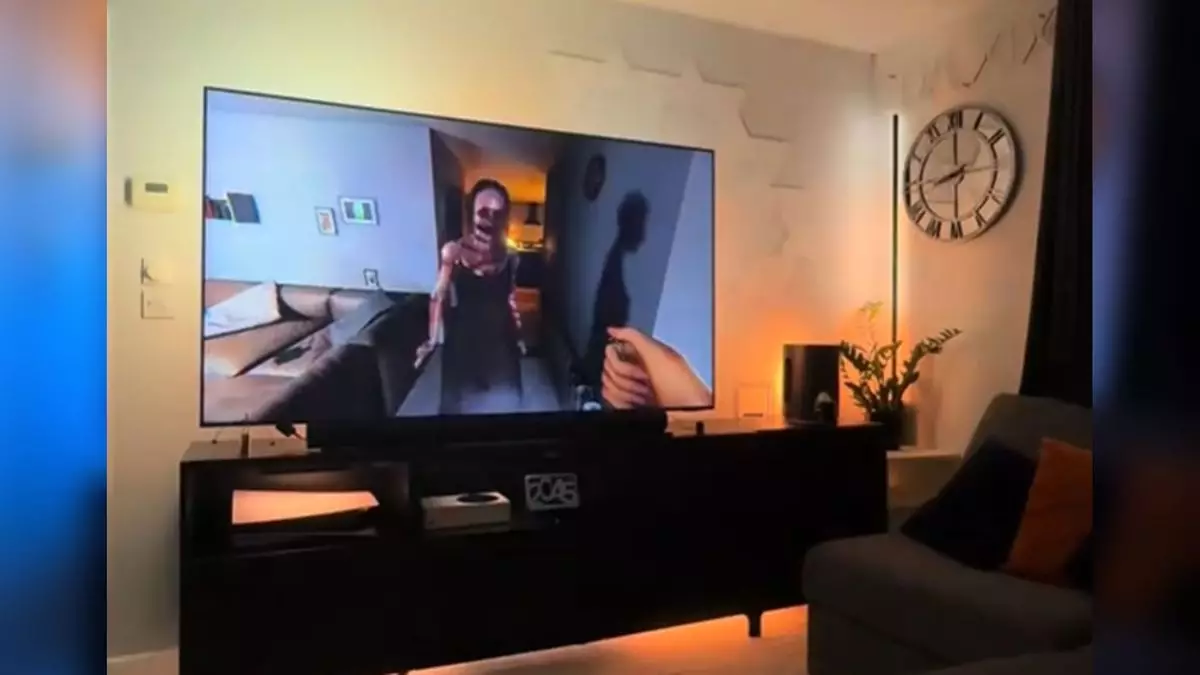In the sphere of gaming, the goal has always been to create experiences that pull players into another realm, and technology has played a significant role in achieving that end. From VR headsets that engulf you in a virtual world to haptic feedback systems designed to make you feel every bump and flicker, the possibilities are endless. Yet, while many advancements are geared toward enhancing enjoyment, there exists a peculiar flip side where immersion can morph into sheer terror. This phenomenon is excellently framed through the escapades of TikTok user Idaxix, affectionately dubbed “The LED Light Guy.”
Idaxix has managed to construct an eye-catching display of synchronized LED lights that brighten their living space, aiming to amplify their gaming sessions on a grand scale. The premise is simple: immerse oneself in the thrill of big-screen gaming through an intricate network of smart bulbs and RGB light strips. However, things take a haunting turn when these visual effects are coupled with the psychological horror of games like Phasmophobia, which centers around ghost hunting and supernatural dread. The clever synchronization signals when a ghost is near by creating a cacophony of flashing lights—an innovation that may strike fear into even the bravest gamer.
One cannot help but reflect on where the line is drawn between engaging and unsettling gaming. The combination of spine-chilling audio, strategically placed visuals, and an inexorable feeling of dread can turn any game into a borderline nightmarish experience. Personally, while I appreciate a well-crafted horror film or a scare-inducing game, I would find it much too daunting to dive into a space where flickering lights denote impending doom. The effort made by Idaxix in merging technology and horror is commendable, but for those of us with a more timid disposition, it may be advisable to maintain a safe distance—preferably in a well-lit room, far from ghost-infested realms.
Yet, amidst this eerie setup, Idaxix manages to provide a counterbalance through an array of lighter gaming experiences showcased in their TikTok account. Rainbow road races in Mario Kart, for instance, are excellent palate cleansers, adorning the gameplay with vibrant lighting that evokes joy rather than terror. The juxtaposition of these experiences raises questions about our relationship with gaming and the various ways technology can manipulate our feelings and reactions.
Reflecting on my own encounters with immersive technology, a recent demonstration by Razer in Las Vegas offered a fascinating glimpse into the future of gaming. Armed with a rumble pad, haptic-enhanced headphones, and RGB light bars, I had the chance to engage with Thumper, a psychedelic racing game renowned for its intense auditory and visual effects. This experience awakened a sense of curiosity regarding how such technologies can elicit deeper emotional responses from players.
In pondering the advances of tech, it’s clear that creating overlays of horror and immersive feedback could constitute the pinnacle of gaming experiences. However, I admit that this level of engagement may not be my cup of tea. One has to wonder, what if horror games like Phasmophobia were integrated with additional tech? For example, picture a Razer Project Arielle chair that employs a fan-assisted system to provide a chilling breeze at critical moments within the game—a company would probably find a market filled with terrified yet intrigued consumers balancing both thrill and fear.
As gaming continues to tread the line between innovative and terrifying, it amplifies the need for individuals to assess their comfort levels. While technologies like those utilized by Idaxix are creative and commendable, they also serve as a stark reminder of how interconnected gaming has become with our emotional states. The juxtaposition of fear and innovation illustrates an essential aspect of modern gaming culture: the desire for immersive experiences that resonate deeply with players.
For some, these advancements mold an adrenaline-infused journey worth embarking on, while for others, they may serve as a prompt to retreat into more benign virtual adventures. Ultimately, as gaming technology continues to evolve, it becomes crucial for players to explore their preferences, indulging in what excites them while steering clear of interactions that may plunge them into their worst nightmares. The choice, as always, remains in the hands of the player.


Leave a Reply